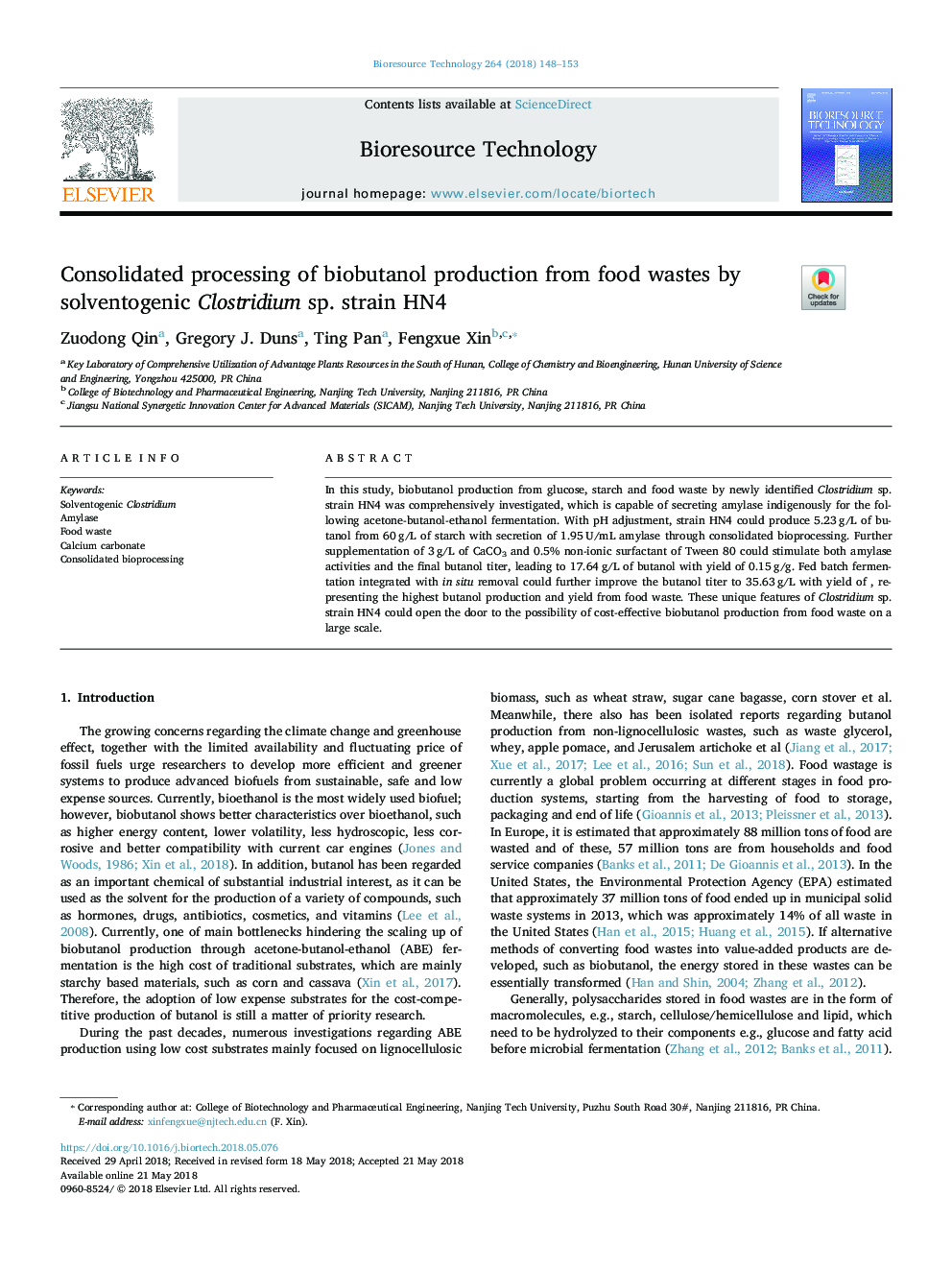| Article ID | Journal | Published Year | Pages | File Type |
|---|---|---|---|---|
| 7066445 | Bioresource Technology | 2018 | 6 Pages |
Abstract
In this study, biobutanol production from glucose, starch and food waste by newly identified Clostridium sp. strain HN4 was comprehensively investigated, which is capable of secreting amylase indigenously for the following acetone-butanol-ethanol fermentation. With pH adjustment, strain HN4 could produce 5.23â¯g/L of butanol from 60â¯g/L of starch with secretion of 1.95â¯U/mL amylase through consolidated bioprocessing. Further supplementation of 3â¯g/L of CaCO3 and 0.5% non-ionic surfactant of Tween 80 could stimulate both amylase activities and the final butanol titer, leading to 17.64â¯g/L of butanol with yield of 0.15â¯g/g. Fed batch fermentation integrated with in situ removal could further improve the butanol titer to 35.63â¯g/L with yield of , representing the highest butanol production and yield from food waste. These unique features of Clostridium sp. strain HN4 could open the door to the possibility of cost-effective biobutanol production from food waste on a large scale.
Related Topics
Physical Sciences and Engineering
Chemical Engineering
Process Chemistry and Technology
Authors
Zuodong Qin, Gregory J. Duns, Ting Pan, Fengxue Xin,
